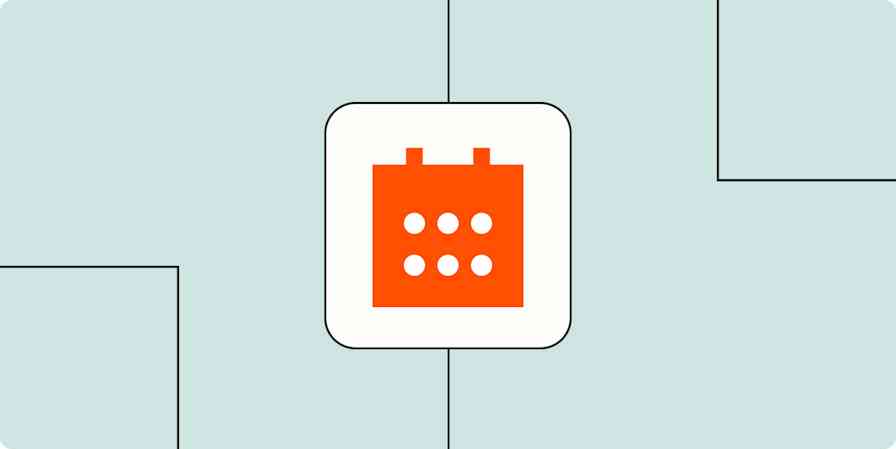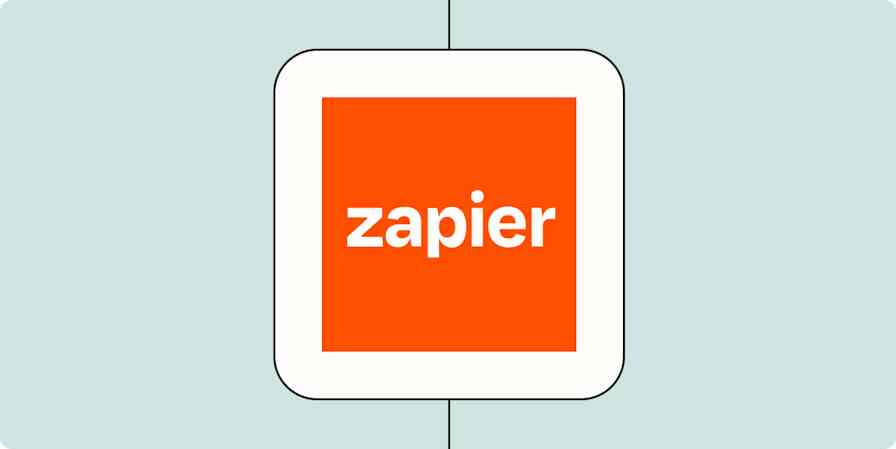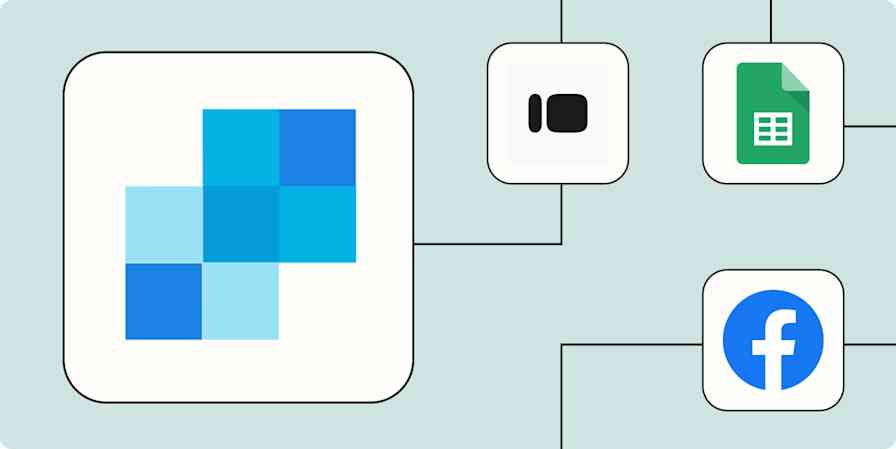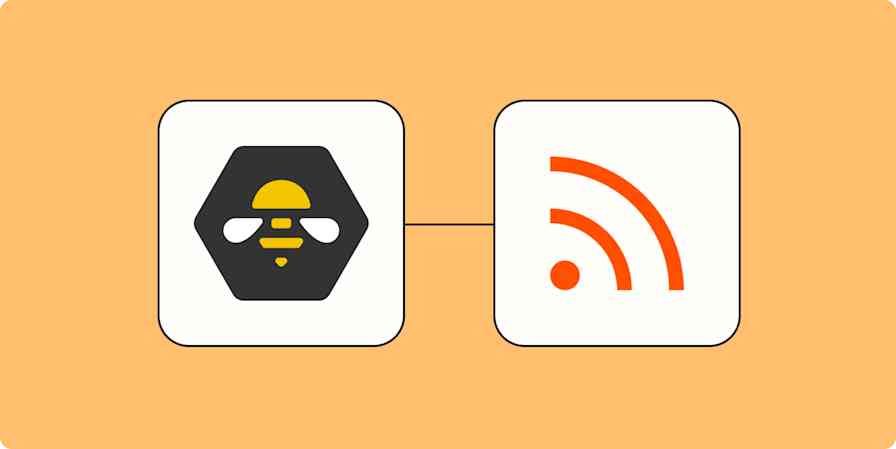Multi-Step Zaps open up a lot of workflow automation options. So we asked our power users: How are Multi-Step Zaps changing the way you work?
Here are five ways that real businesses—from one-person operations to big-name companies—are using Multi-Step Zaps to streamline their work and save time.
Find and Update Customer Profiles with Search Actions
Having a complete view of what's going on with a customer is really important to us. Multi-Step Zaps helped us move that data to one place.

Ben Lack, Senior Director of Marketing & Business Development at Swiftype
Making a sale starts with knowing your customer. So when Ben Lack wanted to craft a 360-degree view of every customer at Swiftype — a company that offers custom site- and mobile-search solutions—he turned to Multi-Step Zaps.
"The more we know about somebody, the better we can tailor our service and support messaging to that person," Ben says. "This Zap gives us the peace of mind that we know about every interaction."
A lot of those interactions happen via support tickets. Swiftype uses Help Scout as their ticketing system, and Salesforce to work with new leads.
But here's the catch: Those two apps didn't always play nice together. If the support team fielded questions from a lead, the sales team might never hear about it.
Ben's solution: A Multi-Step Zap that finds their existing customers in Salesforce, and automatically attaches the Help Scout conversation to their profile as a note. That way, they were always on top of a lead's wants, needs, and pain-points.
"We realized that Multi-Step Zaps could check our Salesforce data, then decide who to attach the conversation to," Ben says. "Now that we have it set up, we're a lot more efficient in our support operations."
More transparency for the sales team, and less copy-paste for support; a definite win-win. Here's how their Multi-Step Zap works:
Swiftype's Zap watches for new conversations in Help Scout
When a new conversation is opened, Zapier searches for that customer in Salesforce based on the email address attached to the ticket
From there, the Zap adds a note to the customer found in Step 2, providing Swiftype's sales team with a full picture of that customer's conversations.
"Having a complete view of what's going on with a customer is really important to us," Ben says. "Multi-Step Zaps helped us move that data to one place."
Automatically Build and Manage Custom-Tailored Projects
None of the apps, by themselves, had the capabilities we're looking for. Zapier brings them together and makes it possible.

Brady Lewis, Founder of Allmoxy
Client work is never a cookie-cutter affair. Each project requires planning, discussions, and some custom work. But Brady Lewis has figured out a way to automate a good chunk of that setup.
Brady is the founder of Allmoxy, a platform that helps small businesses scale and manage their resources efficiently. Allmoxy offers tools for running things like online shops, payments systems, and customer service hubs.
On top of that, Allmoxy has a paid consulting service that gets teams off the ground with hands-on help. That's where the challenges spring up: Every client has different needs, so every project Brady maps out is unique.
"We deal with a lot of setup for new customers," Brady says. "There are many key steps that happen throughout the sales and marketing process; and, of course, throughout actually getting a client up-and-running."
The Allmoxy team uses Infusionsoft to manage their clients, and Trello to streamline projects. When a customer expresses interest in Allmoxy's consulting help, they pick which tools they need using an Infusionsoft form.
Each option—like marketing automation or SEO services—is added to that customer's Infusionsoft profile as a tag. From there, Brady created a Trello board for each client, and a card for each service they were interested in.
Here's the kicker: Brady had to create all those custom cards and boards by hand. "I can't stand to do things manually, but I didn't want to hire somebody to do all these manual tasks," Brady says. "This could have been a full time job for somebody."
Instead, Brady set up some Multi-Step Zaps. "Zapier allows us to create workflows that just automate themselves," he says.
Now, each time a new Infusionsoft contact comes in, a Zap automatically creates a Trello board. Then, a Trello card is automatically created for each new service that the client requested. No more manual work.
"None of the apps, by themselves, had the capabilities we're looking for," Brady says. "Zapier brings them together and makes it possible."
Calculate, Create, and Send Estimates from a Single Form Submission
Zapier really comes into play at almost every step of our business now.

Mark Johnson, Co-Founder of Knotty Tie Co.
When your company is built on creating custom apparel, saving even a couple hours per project can have a huge impact on your bottom line. So Knotty Tie Co. co-founder Mark Johnson wants to make every minute count.
Here's how it works: Knotty Tie hand-sews made-to-order neckties, scarves, pocket squares and bow ties. You give them details like color, design, number and sizes, and they provide an estimate plus a proof for your approval. Within a few weeks, your tailor-made accessory arrives on the doorstep.
The problem? More orders leads to more paperwork, and every order is different. Knotty Tie's design team was spending hours a day putting together estimates; time they could have spent creating custom projects for their customers.
"Our designers would actually fill out a Google Doc for the estimate with the information that was submitted," Mark says. "They would copy the information over, calculate everything, and send that back out."
It wasn't the most efficient process. So Mark simplified their pipeline with two Multi-Step Zaps. The first one watches for new submissions in Typeform, the form app that Knotty Tie uses to collect orders, and sends them to WebMerge, an app that can automatically create and populate documents.
WebMerge adds the data to an Excel spreadsheet, runs a few calculations, and creates an estimate for the order. Plus, the new Typeform submission triggers the creation of a customer in ActiveCampaign, Knotty Tie's CRM. That way they can keep tabs on each lead, from start to finish.
"Zapier really comes into play at almost every step of our business now; right from the initial form submission," Mark says.
Mark's second Multi-Step Zap triggers on the first. Once WebMerge works its magic and whips up a new estimate, the Zap saves that file to Google Drive, finds the related contact in ActiveCampaign, and sends that contact an email with a link to the estimate. The end result: Happy customers, a happy design team, and more filled orders.
"This is probably saving us at least three hours a day," Mark says. "Zapier has been instrumental in us being able to do what we do."
Create Tasks for Each New Project Automatically
It's like having an assistant who takes care of the paperwork all day long, every day, and you just don't have to think about it.

Jason Morris, Founder of Round Table Law
Put a price-tag on your time: How much is 10 minutes worth to you? Jason Morris managed to make every billable hour worth more for his clients by eliminating busywork.
Jason worked with the big law firms as a summer student during his breaks from law school, and as an articling student after earning his degree. Along the way he picked up some tricks of the trade, but he noticed something strange: many of his peers weren't leveraging all the tools at their disposal.
"I realized that a lot of lawyers weren't using the technology that was available to them," Jason says. "It irked me because I knew how much better the process could be."
After graduation, Jason launched his own firm, Round Table Law. And he wanted to do things differently: he saw that bigger firms were using outdated tech and processes, and passing the cost of that inefficiency onto their clients.
Instead, he chose to weave apps, innovation, and more effective processes into the fabric of his business. He got set up with Clio, an app built specifically for managing law practices, and used Zapier to dispatch data to other platforms.
"I've essentially moved all my mission-critical software onto the cloud," Jason says. "Clio is the starting point for my law firm's data, then I use Zapier to spread it out to my other tools."
Here's an example: Jason set up a Multi-Step Zap that creates a structure for a case whenever a new matter is opened in Clio. First, it creates a new label in Gmail to track specific threads. Next it starts a new project in Toggl to track Jason's hours, plus a new list in Wunderlist for any to-dos related to the case. Finally, the Zap logs the case to a Google Spreadsheet. Now Jason can track progress on a case across platforms, with minimal setup.
Multi-Step Zaps allowed Jason to simplify how each project was structured, so he could get back to helping his clients. What used to take hundreds of lines of code is now handled by a single workflow.
"It's like having an assistant who takes care of the paperwork all day long, every day, and you just don't have to think about it," Jason says. "Everything just happens in the background."
Qualify Leads with Signals from Your Apps
Nine times out of ten, I can create an application faster than our development team. Zapier has become our go-to backend tool.

Guillaume Cabane, Head of Growth at Mention
Making a sale depends on knowing when, where, and how to reach your prospects. And Guillaume Cabane, who heads up growth at brand-monitoring company Mention, wanted to make sure that he was keeping track of every tidbit his customers told him.
Guillaume uses data to make Mention's sales process smarter. With the right inputs, they can tell when a user is ready to buy, which features they're interested in, and specific demographics that help them target a plan to the individual's needs.
But here's the catch: wrangling that data is tougher than it sounds. Guillaume wanted to be able to track each user's interactions with the Mention brand—whether they were setting up their account or submitting a support ticket. But different apps handled different data, and it wasn't all passed back to a central hub.
"When I pay for a piece of software that my customers interact with, like emails or webinars, I think that data belongs to me," Guillaume says.
Guillaume wanted to make sure they were painting a complete picture of each customer. So he used a set of Zaps that hand-off data from their platforms to Segment, a tool that transforms tangled information source into actionable analytics. That way, each user was tagged with crucial info that the Mention team could tap into later.
And since Segment doesn't have a Zapier integration, Guillaume got creative: he imported and exported data via webhooks, which are data-delivery tools that pass apps information.
Here's an example: Mention's sales team relies on Pipedrive to track leads from trial to purchase. They also like to watch for prospects who are likely to upgrade—like users who have maxed out their plan limits—so they can reach out directly.
To streamline the process, Guillaume built a Multi-Step Zap that combined webhooks with Pipedrive and a bit of custom code.
"Before this, our sales team had to do everything manually," Guillaume says. "They would scroll down and find all the people who would create Mention accounts, and they would figure out which ones looked interesting. Now we're doing all the detection for them."
The workflow starts with a webhook, which fires when a Mention user hits their plan limit. Then, Guillaume uses a Search Action to find the contact in Pipedrive, and another step to automatically create a note so his sales team can follow-up.
And here's a fun trick: Using Zapier's Code App and Google Apps Script, Guillaume wrote a custom function that leveraged Google Maps data to find the lead's timezone. That way, Mention's sales team always knows the ideal time to make a phone call.
"Nine times out of ten, I can create an application faster than our development team," Guillaume says. "Zapier has become our go-to backend tool."
Have you tried building your own workflows with Multi-Step Zaps yet? If you want to do more, work less, and save time, hit the button below to snag a free 14-day trial.





